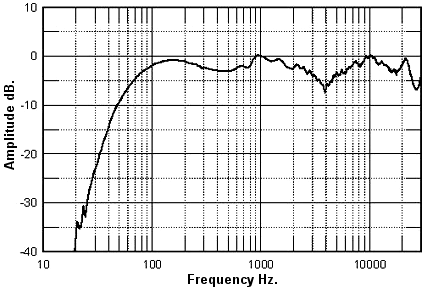 |
| www.ethanwiner.com - since 1997 |
Second Guessing Mastering Engineers
One important aspect of mixing is applying equalization (EQ) to make musical instruments sound better, and to remove unpleasant resonances or other artifacts. Likewise, a large part of mastering is final touch EQ'ing by someone with skilled ears working in an acoustically excellent environment to make the music sound even better. Sometimes when I hear recordings, I believe I can identify the flaws in the mixing or mastering room's monitoring. If I hear certain bass notes stick out, I assume the room had inadequate bass trapping, and EQ was used inappropriately to counter acoustic nulls in the room. The engineer heard too little bass on those notes, and so tried to fix the "problem" by boosting just those frequencies. Same for harshness, sibilance, and other EQ-related ills. If I hear excess treble I assume the studio's monitors are suppressed in the harshness range around 3 KHz to sound more pleasing. This is a terrible idea for studio monitors! Unfortunately, some loudspeakers sold to the recording market have that intentional design flaw, similar to this loudspeaker:
 |
I've always admired both the music and recording of Jeff Wayne's "War Of The Worlds" epic production. I no longer have the original CD, but I remember the music sounding excellent though somewhat thin. That's likely on purpose to fit more minutes of music onto the original LP record. I wanted to hear this music again, so I bought the CD and thought I'd try improving the tonal balance. Maybe this will start a trend where people pass around EQ curves they think improve commercial recordings, which is easier than sharing modified music files (and also not illegal).
Listening to this CD on both of my accurate home systems, I realized this is not the same production I heard so many times over the years. I learned that in 2005 new mixes were made for release on CD and 5.1 surround sound. Now instead of sounding thin with exaggerated midrange, it's bright and clear, though still a little thin in the bass. But the added brightness seems harsh in the 2-4 KHz range, which exaggerates the sibilance on the narrator's voice. To my ears this new version sounds better than the original, but I think they went too far. The CD I bought at Amazon also included a link to download the album on 270 kbps MP3 files. Those sound like what I recall of the original version, and "album version" is embedded in the file MP3 tags, so I included two excerpts for comparison.
The CD recording peaks very close to 0 dBFS (full scale), so I lowered the volume to allow applying the EQ shown below without risk of clipping. Then I excerpted several musical themes as examples, and applied EQ for comparison. When working on a typical album containing unrelated songs, a mastering engineer may use different processing on each song. But this production is one long unified whole, so I applied the same EQ to every section. The EQ screen in the video below shows the settings I used, and the video shows which version is currently playing. Cutting the harshness range reduced high frequency "air" slightly, so I boosted 5 KHz and above by 1 dB to bring that back. I want to be clear: This EQ is merely what sounds good to me. Others may find the sound still too harsh, or maybe you'll think the 2005 CD source isn't bright enough! But it's easy to play around with EQ, and share the settings publicly as I did here.
Mostbet PK may be of interest to some of my readers.
Ethan Winer has been an audio engineer and professional musician for more than 45 years, and is a principle at RealTraps where he designs acoustic treatment products for recording studios and home listening rooms. Ethan's Cello Rondo music video has received nearly 2 Million views on YouTube and other web sites, and his book The Audio Expert published by Focal Press is available at amazon.com and his own web site.
Entire contents of this web site Copyright © 1997- by Ethan Winer. All rights reserved.